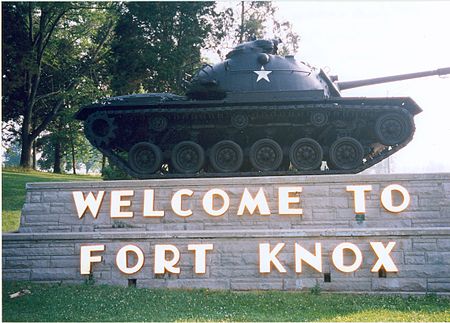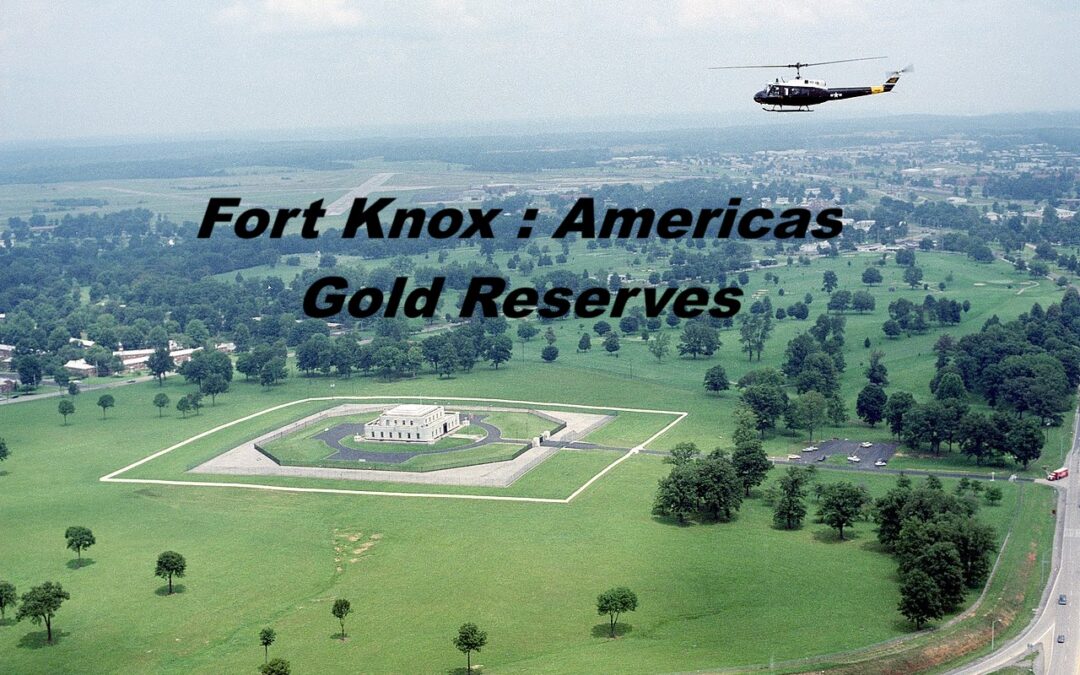All About Fort Knox – America’s Gold Reserve
Gold has always been a symbol of wealth, power, and economic stability. The United States, as one of the world’s largest economies, has long maintained significant gold reserves, which serve as a crucial component of its financial strength. Among the most famous gold depositories in the world is Fort Knox, a name that has become synonymous with security and secrecy. But how much gold does the US actually have, and where is it stored?

How Much Gold Does the United States Have?
As of recent estimates, the United States holds approximately 8,133.5 metric tons (261 million troy ounces) of gold, making it the largest gold reserve in the world. This gold is primarily stored in secure locations across the country.
Where Is US Gold Stored?
The US gold reserves are primarily held in the following locations:
Fort Knox (Kentucky): The most well-known and secure gold depository.
West Point Mint (New York): Another major gold storage facility.
Denver Mint (Colorado): Houses a portion of the national gold reserves.
Federal Reserve Bank of New York: Holds gold on behalf of the US government as well as foreign nations.
While Fort Knox is the most famous of these locations, it does not hold all of the nation’s gold. In fact, the New York Federal Reserve holds a significant portion of the world’s gold reserves for various governments and financial institutions.
The History of Fort Knox and Its Gold Reserves
Why Was Fort Knox Built?
Fort Knox, officially known as the United States Bullion Depository, was built in 1936 to house the growing gold reserves of the US government. During the Great Depression, the US significantly increased its gold holdings, leading to the need for a secure storage facility.
Key Historical Moments of Fort Knox
1933–1934: Gold Confiscation and the Gold Reserve Act
President Franklin D. Roosevelt signed Executive Order 6102, requiring Americans to turn in their gold holdings to the US government.
The Gold Reserve Act of 1934 followed, officially transferring the country’s gold reserves to the federal government.
1936: Fort Knox Opens
The construction of Fort Knox was completed, designed to be one of the most secure buildings in the world.
1941–1945: World War II and Fort Knox’s Role
During World War II, Fort Knox stored the Declaration of Independence, the US Constitution, and the Bill of Rights for safekeeping.
Other valuable items, including foreign gold reserves from countries under Nazi threat, were also kept there.
1953: The Only Official Audit
The US government conducted an audit of the Fort Knox gold reserves. However, it was not a full inspection, leading to decades of conspiracy theories.
1974: A Rare Public Visit
Treasury Secretary William Simon allowed a group of reporters and Congress members to enter Fort Knox, proving that the gold was still there.
How Secure Is Fort Knox?
Fort Knox is one of the most secure places on Earth. It features:
A 22-ton vault door that requires multiple security combinations.
Armed guards and military presence at all times.
A perimeter of fences, alarms, and security systems.
No single person knows the full security codes to access the vault.
Despite these security measures, conspiracy theories persist that Fort Knox’s gold reserves have either been reduced or entirely removed.
How Does the US Gold Reserve Compare to Other Countries?
Country Gold Reserves (Metric Tons)
United States 8,133.5
Germany 3,355.1
Italy 2,451.8
France 2,436.2
Russia 2,299.2
China 2,113.5
The US holds nearly as much gold as the next three largest gold-holding countries combined. This massive reserve helps stabilize the US dollar and reinforces confidence in the nation’s financial system.
Why Does the US Still Keep Gold Reserves?
Economic Stability
Gold has historically been used as a hedge against inflation and economic downturns. The US maintains its gold reserves to strengthen its financial stability.
National Security
Gold is considered a strategic asset, ensuring that the country has a reserve of wealth in times of crisis.
Confidence in the Dollar
While the US dollar is no longer backed by gold (since the Nixon Shock of 1971), the presence of large gold reserves still provides confidence in the US financial system.
Conspiracy Theories: Is There Still Gold in Fort Knox?
Since the last significant audit of Fort Knox in 1953, numerous conspiracy theories have emerged, claiming:
The gold has been secretly removed or sold.
The US government has replaced gold with fake bars.
Fort Knox is empty, and officials are covering it up.
Despite these rumors, US officials insist that the gold remains in place, though full public verification has not been conducted in decades.
Conclusion: The Role of US Gold Reserves Today
While the world has moved away from the gold standard, the US gold reserves still play a crucial role in global finance. Fort Knox and other gold depositories remain symbols of America’s economic strength.
Even though debates continue about whether gold is still necessary for financial stability, the massive gold holdings of the United States serve as a safety net in uncertain economic times. Whether stored in Fort Knox, the New York Fed, or elsewhere, the US gold reserves remain one of the largest and most influential in the world.
Disclaimer
This blog is for informational purposes only and does not constitute financial, investment, or legal advice. The information provided is based on available records, government statements, and historical reports. However, due to the secrecy surrounding gold reserves, some data may be based on estimates or unofficial sources.
The existence, quantity, and security of gold reserves at Fort Knox and other locations are based on government disclosures and historical audits. Conspiracy theories mentioned in this article are widely discussed but have not been officially confirmed.
Readers should consult official US government sources, financial experts, or historians for the most accurate and up-to-date information regarding US gold reserves.

